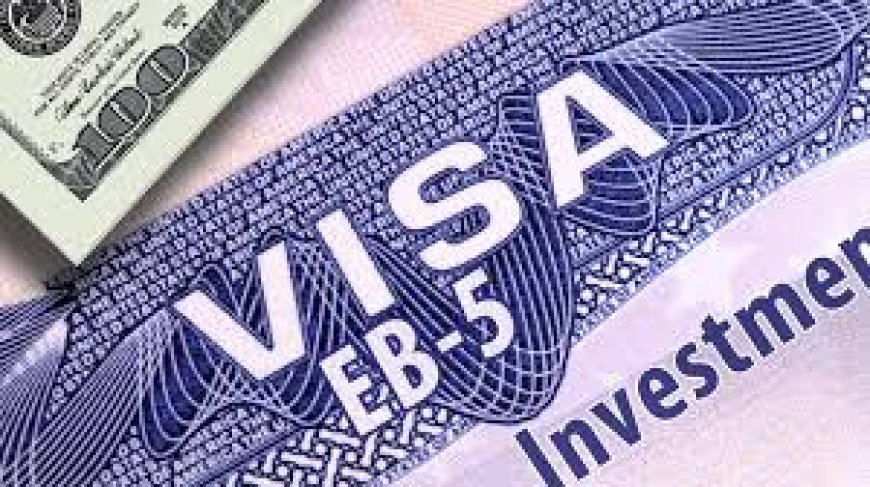How Does the USCIS Priority Date Affect My Green Card?
The USCIS priority date is the date your immigrant petition (like Form I-130 for family or Form I-140 for employment) is officially received by U.S. Citizenship and Immigration Services (USCIS).

When you begin your journey toward U.S. permanent residency, one of the most importantand often misunderstoodterms youll come across is USCIS priority date. Whether you're applying for a green card through family sponsorship, employment, or another path, your priority date plays a key role in determining when you can move forward in the process.
This post will walk you through what the USCIS priority date means, why it matters, and how to track it, all in simple and friendly language.
What Is a USCIS Priority Date?
The USCIS priority date is the date your immigrant petition (like Form I-130 for family or Form I-140 for employment) is officially received by U.S. Citizenship and Immigration Services (USCIS). Think of it as your place in line for a green card. Just like taking a ticket at a deli, the priority date tells the system when its your turn.
For example, if your spouse (a U.S. citizen) files a petition for you on March 10, 2025, then March 10 becomes your priority date. Youll use this date to compare with the monthly visa bulletin to know when you can apply for or receive your green card.
Why Is the Priority Date So Important?
U.S. immigration law sets limits on how many green cards can be issued each year in each category and country. Because of these limits, many people can't apply for a green card immediately after their petition is approved.
This is where your USCIS priority date comes init lets you know when a green card visa is available for you. Only when your priority date becomes "current" can you take the next step in your green card journey, whether thats adjusting your status in the U.S. or attending an interview abroad.
Who Needs to Worry About Priority Dates?
Not everyone. If you're an immediate relative of a U.S. citizen (like a spouse, unmarried child under 21, or parent), your visa is always available. That means your priority date becomes current right away, and you don't have to wait in a backlog.
But if you're in a preference categorylike a sibling of a U.S. citizen or a worker being sponsored by an employeryou'll have to keep an eye on the visa backlog. Your priority date is essential in these situations.
How to Find Your USCIS Priority Date
Once USCIS receives your petition, they will issue a receipt notice (Form I-797). Your priority date will be listed there. Hold onto this noticeits one of the most important documents in your immigration process.
How Does the Visa Bulletin Work?
The U.S. Department of State publishes a Visa Bulletin each month. This bulletin shows when applicants in different categories and from different countries can move forward based on their priority dates.
There are usually two charts for each category:
-
Final Action Dates These are the dates when visas are actually available. If your priority date is earlier than this date, you can receive your green card.
-
Dates for Filing These are used by USCIS to let you file your application earlier, even if your green card wont be issued right away.
To check your status, compare your USCIS priority date to the dates listed in the bulletin under your category and country.
Examples of Visa Bulletin Use
Lets say your employment-based petition has a priority date of June 15, 2023. If the Visa Bulletin for your country shows a Final Action Date of July 1, 2023, your date is now currentand you can proceed.
However, if the bulletin only lists up to May 1, 2023, youll need to wait a bit longer. Its that simple.
Why Are There Backlogs and Delays?
Green card backlogs happen because of annual limits and high demand in certain categories or countries. Some categories have waiting lists that are only a few months long. Others can stretch for years, especially for applicants from countries with high immigration numbers, like India, China, Mexico, and the Philippines.
For example, siblings of U.S. citizens from the Philippines may wait over 20 years for their green card. In contrast, a spouse of a U.S. citizen from Canada might have almost no wait at all.
How to Stay Updated on Your Priority Date
Checking your priority date regularly is key to avoiding delays. Heres how:
-
Visit the Department of States Visa Bulletin page each month
-
Look for your category and country
-
Compare your priority date to the posted dates
-
Sign up for alerts or reminders so you dont miss updates
When your date becomes current, you can move forward quickly if youre prepared.
What Happens When Your Priority Date Becomes Current?
When your USCIS priority date is current:
-
If youre in the U.S., you can file Form I-485 to adjust your status to permanent resident.
-
If youre outside the U.S., youll continue with consular processing and attend your green card interview at a U.S. embassy or consulate.
If youve already submitted your I-485 or attended your interview and your priority date becomes current, USCIS or the Department of State can now approve your green card.
Can Your Priority Date Ever Change?
In most cases, your priority date stays the same throughout the process. However, if your petition is withdrawn, denied, or not approved, you might lose your spot.
That said, if you file a new petition in the same category, USCIS may allow you to "retain" your original priority date. This helps you avoid starting from the back of the line again.
Tips While Waiting for Your Priority Date to Become Current
Waiting can be hard, especially when your future depends on a process you cant control. But you can still make the most of your time:
-
Keep all your documents safe and organized
-
Notify USCIS if your address changes
-
Stay legally in status if youre in the U.S.
-
Watch out for scams or false promises
-
Get professional help if your case is complex
The key is to be prepared so you can act quickly once your date is current.
Can You Speed Up the Process?
Theres no magic button to jump the line. The USCIS priority date is mostly fixed by law and regulations. However, in rare cases, you may qualify for faster processing:
-
National interest waiver for certain professionals
-
Humanitarian reasons, like health issues or threats
-
Job offers with urgent need
These situations are uncommon, and strong documentation is required.
In Summary: Understanding Your USCIS Priority Date Matters
Your USCIS priority date is more than just a numberits a signal that tells you when its your turn in the green card process. While the system may be slow and sometimes frustrating, its still the path that thousands of people follow successfully every year.
By understanding how priority dates work, how to read the Visa Bulletin, and how to prepare during the wait, youll be ready to take the next step confidently when your time comes.
Stay informed, stay organized, and keep hope alive. Because even though immigration is a journey of patience, the destinationa better life in the U.S.is absolutely worth it.






































